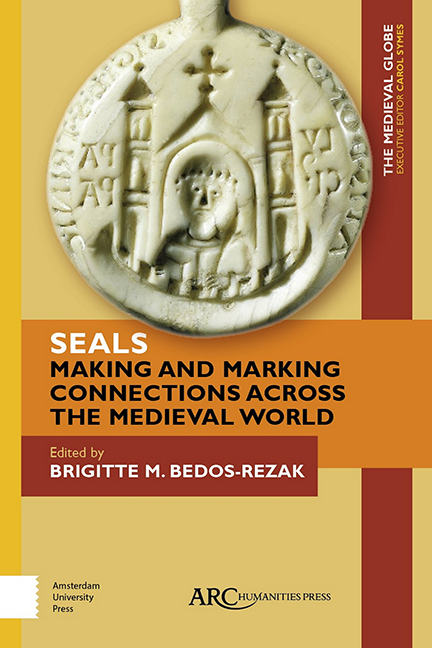Book contents
- Frontmatter
- Contents
- List of Illustrations
- Acknowledgements
- Cultural Transactions: An Introduction to Medieval Seals from a Global Perspective
- Seals as Conceptual and Ritual Tools in Chinese Buddhism, ca. 600– 1000 CE
- Imprinting Powers: The Astrological Seal and Its Doctrinal Meanings in the Latin West
- A Medieval Solution to an Early Modern Problem? The Royal Animal Seals of Jambi
- Expressing New Rule: Seals from Early Islamic Egypt and Syria, 600– 800 CE
- The Formulation of Urban Identity on Byzantine Seals
- The Cloth Seal: A Mark of Quality, Identification, or Taxation?
- Archaeology and Sigillography in Northern Europe
- Medieval Treaties and the Diplomatic Aesthetic
- Index
Archaeology and Sigillography in Northern Europe
Published online by Cambridge University Press: 20 November 2020
- Frontmatter
- Contents
- List of Illustrations
- Acknowledgements
- Cultural Transactions: An Introduction to Medieval Seals from a Global Perspective
- Seals as Conceptual and Ritual Tools in Chinese Buddhism, ca. 600– 1000 CE
- Imprinting Powers: The Astrological Seal and Its Doctrinal Meanings in the Latin West
- A Medieval Solution to an Early Modern Problem? The Royal Animal Seals of Jambi
- Expressing New Rule: Seals from Early Islamic Egypt and Syria, 600– 800 CE
- The Formulation of Urban Identity on Byzantine Seals
- The Cloth Seal: A Mark of Quality, Identification, or Taxation?
- Archaeology and Sigillography in Northern Europe
- Medieval Treaties and the Diplomatic Aesthetic
- Index
Summary
ANYONE FAMILIAR WITH the study of sigillography will know that the word “seal” (Latin: sigillum) has two meanings. A seal is both a seal impression and a seal matrix, the tool used to make the impression. By noting this, we have already touched upon the complexity that characterizes seals: they may appear straightforward, but in actual fact they are multifaceted and complicated. This article will examine the contribution of archaeological evidence to our understanding of the circulation of seals in medieval Europe. When seals are considered solely as archival artefacts, it is not possible to retrieve the full range of their operations. A primary function of medieval seal impressions was to validate and authorize the contents of letters and documents. Seals were not the sole means of authentication available during the Middle Ages, however. Documents could also be validated by notaries. In general, recourse to notaries was much more widespread in southern than in northern Europe; in France, for instance, it has been shown that there were more sealed medieval letters in northern than in southern regions. Indeed, medieval awareness of this pattern is found in two descriptions of miracles associated with Saint Bridget, which the bishop of Linköping in Sweden sent to the Pope on September 10, 1377, and August 2, 1378, sealed with the bishop's and a number of canons’ seals. The letters explained that notaries were rarely employed in Sweden and that trust was not placed in them, but in seals (“quia notariorum usus rarus est in terra ista, nec eis creditur sed sigillis”).
If the extent of sealing's significance was limited to documentary validation, however, modern impressions of newly found matrices would suffice to study their graphic and iconographic features. Yet additional information can be derived from consideration of the design and material of recently discovered matrices, together with the archaeological circumstances of their discoveries. Context is essential to the study of seals. Many archives contain collections of medieval seal impressions, mainly in wax, that have been cut from documents and thus separated from the context of their production. Hence, these detached seals have lost part of their evidentiary potential. The same applies to seal matrices that have entered private or public collections without a known provenance.
- Type
- Chapter
- Information
- Seals - Making and Marking Connections across the Medieval World , pp. 193 - 212Publisher: Amsterdam University PressPrint publication year: 2019



